In Kato Malaki, Rethymnon, Manolis manufactures the traditional Cretan katsouna.
Looking for evidence of preserving the Cretan tradition, travellers come into contact with rare people, a simple way of life, and all the good things of authentic hospitality.
Nature is quiet near and around Kato Malaki, a village not far from the city of Rethymnon and the residence of Manolis Vagionakis.
The goats share the slope just before the village bridge, and, combined with the amphitheatrically built houses, a timeless image like a painting by the popular painter Theofilos Hatzimihail is seen. I park the car on the embankment next to the bridge, and almost immediately, I hear and see a red vehicle pull up next to me.
Before he speaks, Manolis Vagionakis looks at me from the driver's seat with smiling eyes but a scanning look, weighing this unexpected visitor in the middle of winter. His handshake stopped tightening just before my hand was permanently deformed.
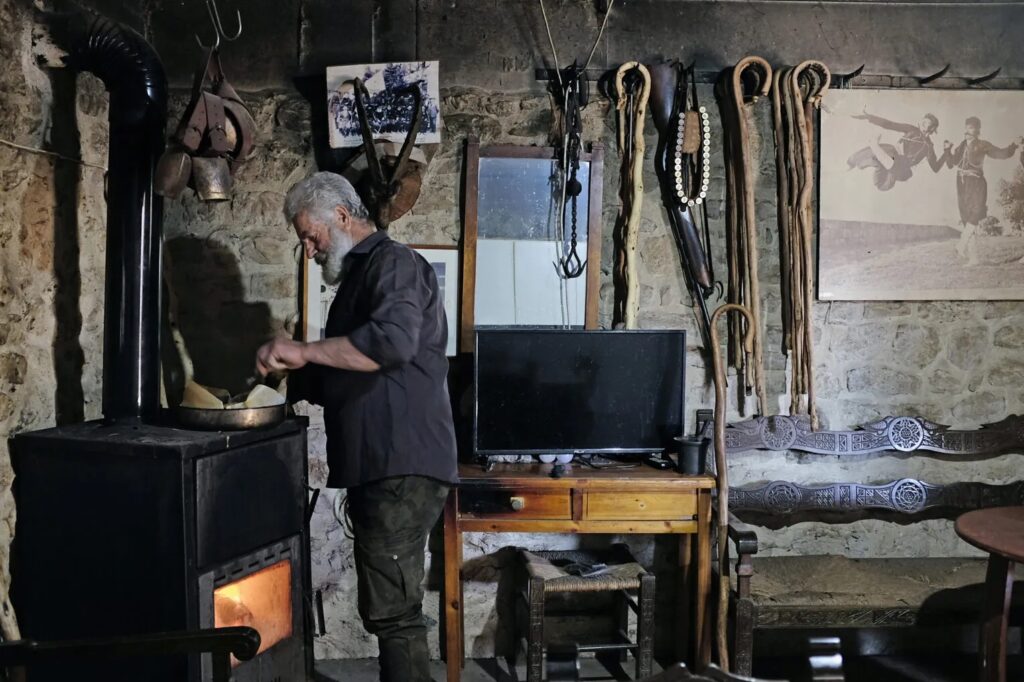
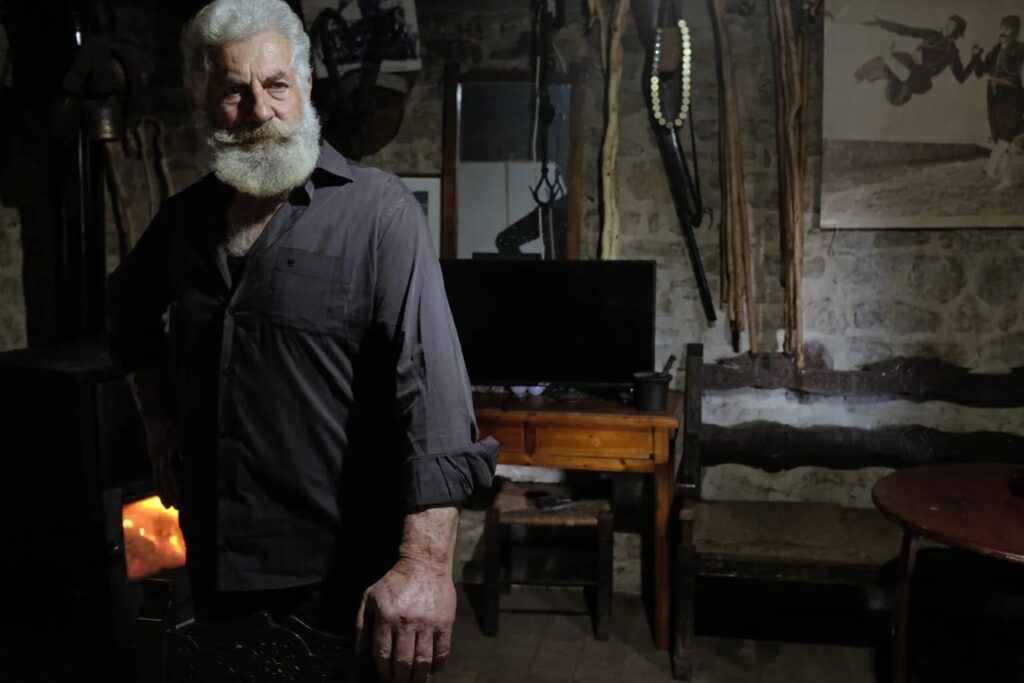
I load the cameras and climb into the passenger seat of his vehicle, which immediately reveals the reasons for its use. There wasn't even a moment to break the ice, and the conversations were lively before we reached the house where he lives and works in a clearing, a little outside and higher up from the village.
Arriving at the concrete building, home but also corral and laboratory at the same time, a very small goat, 2-3 months old, like a pet, comes to meet us, tangling at our feet, familiar and fearless.
"He was orphaned from his litter," Manolis explains, "and I raise him until he joins the rest of the animals in the herd."
A stack of katsounas are standing by the door under the shed. A lot of wood is piled up in the yard, some for burning, but immediately, you can see the ones intended to construct the characteristic Cretan shepherd's crook.
A dozen or so are placed in a bucket of water on one end to keep them fresh until processed.

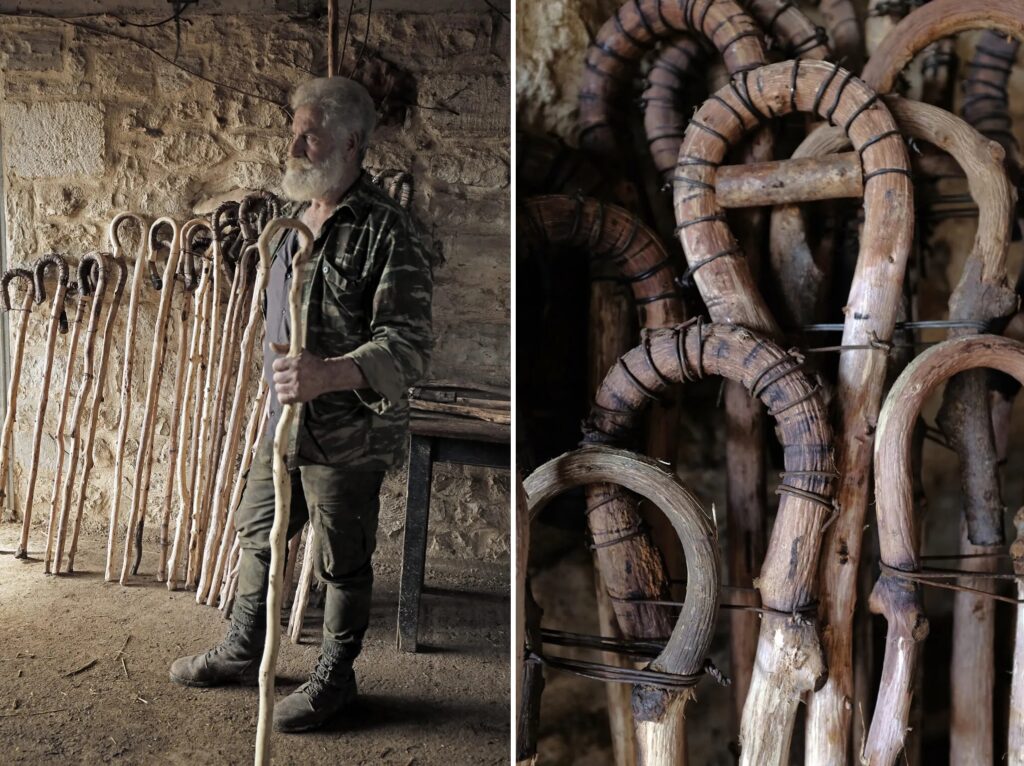
The room where Manolis welcomes me is quite dark but warm and full of the smell of food being cooked in the wood-fired oven in the corner of the room. An asthenic lamp of warm light reveals a large counter of katsounas ready for delivery, neatly arranged side by side, several hanging on the walls but also many photographs of his life, his ancestors and his family.
The clean carefully made single bed and the table in the middle complete the picture.
As he turns the biftekia in the pan and placing small potatoes on the aluminum foil, food specially made for his guest, he talks to me about the art of creating the traditional Cretan katsouna.
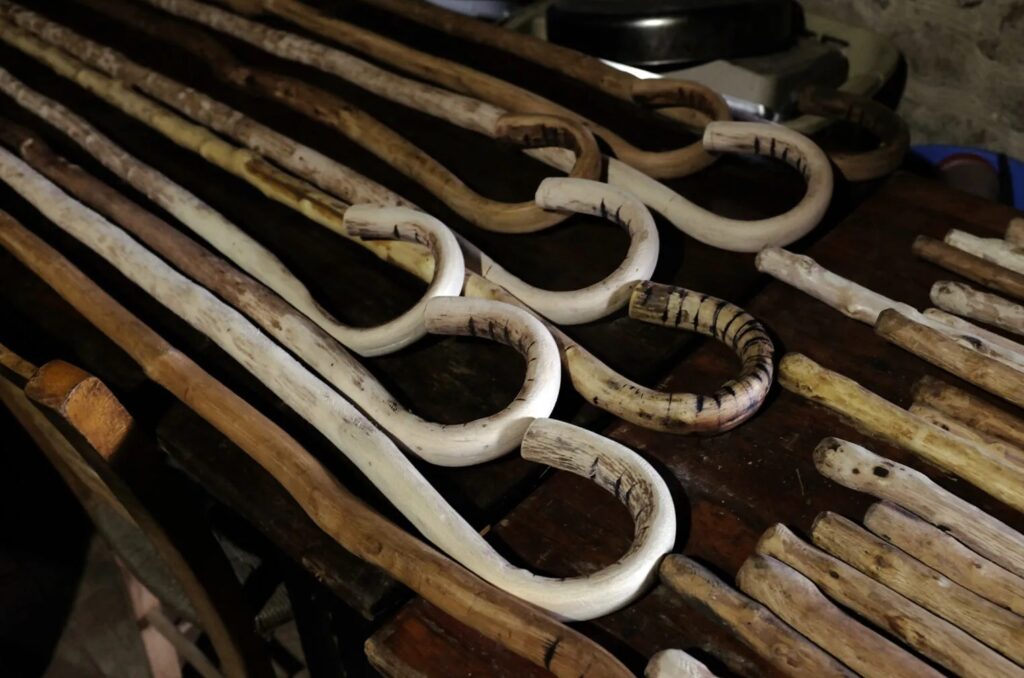
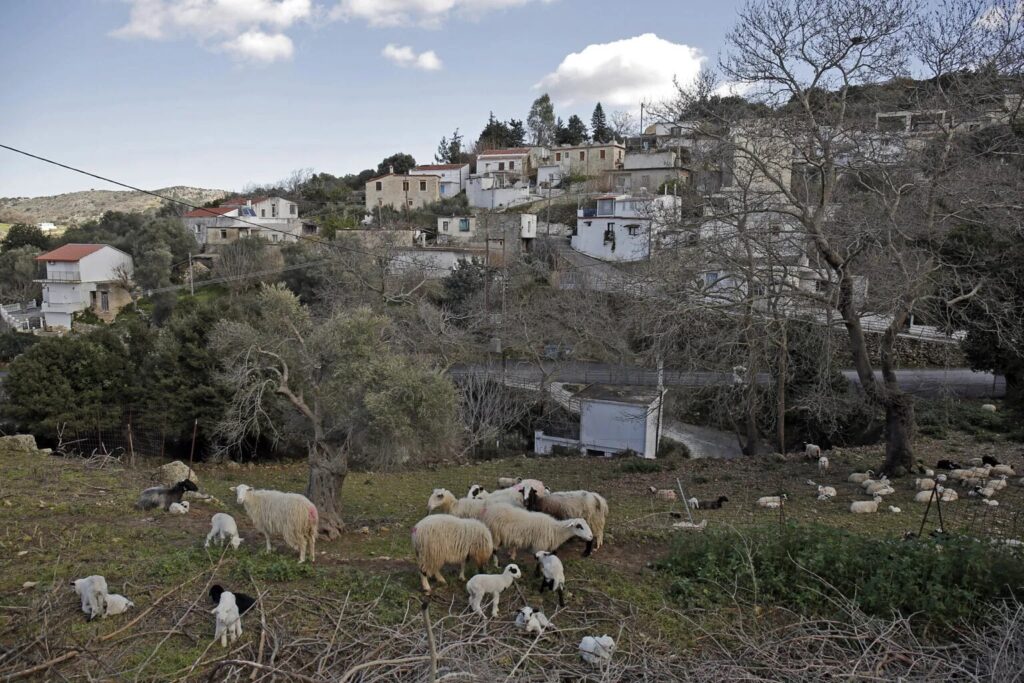
An essential tool of the Cretan shepherd, a strong support but also the use of immobilising the most unruly animals with the curved part of the stick, either by the neck or tripping them, it has been identified as an image with Cretan rural life but has also emerged as a symbol of origin with many Cretans carrying it and walking with it even in the cities.
It is mainly made from the holly wood, a tree similar to the oak. In the past, they were made almost exclusively from Ambelitsia wood, a tree found solely in Crete, with particularly strong wood, until it was declared under protection after its population had been significantly reduced at a low height, driving it almost to extinction.
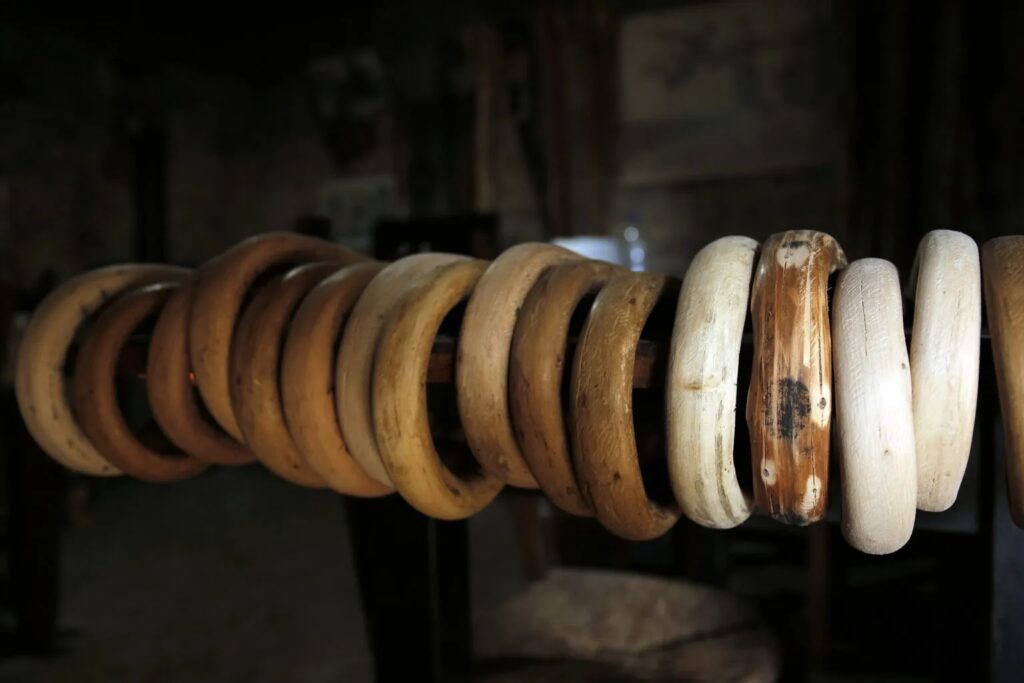
Manolis explains that from a very young age, he had been fascinated by the construction of the katsouna, watching an uncle make them, and he followed the art among his many other pursuits.
He had even been a teacher of traditional Cretan dances when he was younger, with the photo on the wall of him as the protagonist attesting to his skills.
A good katsouna takes a few days to make, from the softening in water and the craftsmanship of the curve to the final finishing, leading him to make about 250 a year. He makes them as a hobby, for friends and acquaintances, for the shepherds of the area, and as a decorative object.


He showed me the distance of closing the handle until the opening fit about three fingers. As I observe his hands, I think he probably means four other people's fingers.
The katsouna is not polished. The texture of the wood is a solid, earthy feel. The height and thickness of each depend on individual preferences.
Shepherds in the mountains, for example, prefer the thicker, albeit heavier ones. A noticeable difference is the slight outward curvature of the handles at the end of some.
These are usually found in western Crete, while the sharp end is preferred from Heraklion and further east.

As he prepares the ready-to-serve food and after he has moistened the bread dough with olive oil before baking it for a while, I have come to my preference: the katsounas with the "snout", the tall ones with characteristic undulations, an image so familiar to the frequent visitor of Crete.
The biftekia are delicious, the fries are steaming, the olive oil is musky, and the raki brings the conversation to a human, friendly, honest connection.
"Talking and dancing, it's housewarming," he tells me, laughing out loud, brightening up this rare day in mountainous Crete even more.
Niko Kokka is a columnist for Travel.
READ MORE: Unveiling the Hidden Greek Roots of Familiar English Names.


